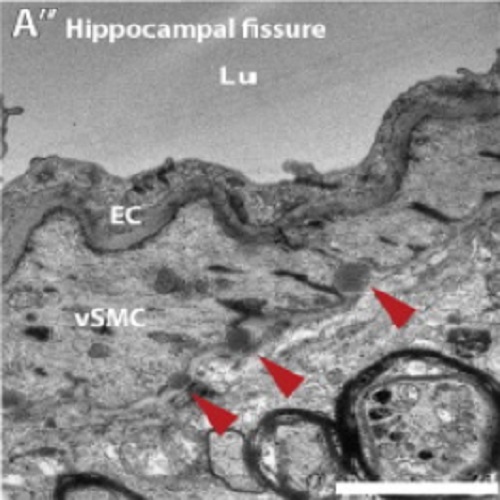Mouse model of CADASIL reveals novel insights into Notch3 function in adult hippocampal neurogenesis.
Could impaired adult hippocampal neurogenesis be a relevant mechanism underlying CADASIL (cerebral autosomal dominant arteriopathy with subcortical infarcts and leukoencephalopathy)? Memory symptoms in CADASIL, the most common hereditary form of vascular dementia, are usually thought to be primarily due to vascular degeneration and white matter lacunes. Since adult hippocampal neurogenesis, a process essential for the integration of new spatial memory occurs in a highly vascularized niche, we considered dysregulation of adult neurogenesis as a potential mechanism for the manifestation of dementia in CADASIL. Analysis in aged mice overexpressing Notch3 with a CADASIL mutation, revealed vascular deficits in arteries of the hippocampal fissure but not in the niche of the dentate gyrus. At 12 months of age, cell proliferation and survival of newborn neurons were reduced not only in CADASIL mice but also in transgenic controls overexpressing wild type Notch3. At 6 months, hippocampal neurogenesis was altered in CADASIL mice independent of overt vascular abnormalities in the fissure. Further, we identified Notch3 expression in hippocampal precursor cells and maturing neurons in vivo as well as in cultured hippocampal precursor cells. Overexpression and knockdown experiments showed that Notch3 signaling negatively regulated precursor cell proliferation. Notch3 overexpression also led to deficits in KCl-induced precursor cell activation. This suggests a cell-autonomous effect of Notch3 signaling in the regulation of precursor proliferation and activation and a loss-of-function effect in CADASIL. Consequently, besides vascular damage, aberrant precursor cell proliferation and differentiation due to Notch3 dysfunction might be an additional independent mechanism for the development of hippocampal dysfunction in CADASIL.

- Neurobiol. Dis. 2015 Mar 31;75:131-41
- 2015
- Neurobiology
- 25555543
- PubMed
Enabled by:
